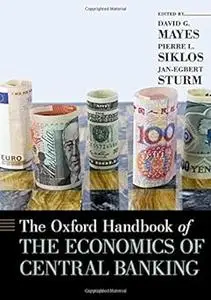David G. Mayes, "The Oxford Handbook of the Economics of Central Banking "
English | ISBN: 0190626194 | 2019 | 808 pages | EPUB, PDF | 15 MB + 25 MB
English | ISBN: 0190626194 | 2019 | 808 pages | EPUB, PDF | 15 MB + 25 MB
The economic influence of central banks has received ever more attention given their centrality during the financial crises that led to the Great Recession, strains in the European Union, and the challenges to the Euro. The Oxford Handbook of the Economics of Central Banking reflects the state of the art in the theory and practice and covers a wide range of topics that will provide insight to students, scholars, and practitioners.
As an up to date reference of the current and potential challenges faced by central banks in the conduct of monetary policy and in the search for the maintenance of financial system stability, this Oxford Handbook covers a wide range of essential issues. The first section provides insights into central bank governance, the differing degrees of central bank independence, and the internal dynamics of their decision making. The next section focuses on questions of whether central banks can ameliorate fiscal burdens, various strategies to affect monetary policy, and how the global financial crisis affected the relationship between the traditional focus on inflation targeting and unconventional policy instruments such as quantitative easing (QE), foreign exchange market interventions, negative interest rates, and forward guidance. The next two sections turn to central bank communications and management of expectations and then mechanisms of policy transmission. The fifth part explores the challenges of recent developments in the economy and debates about the roles central banks should play, focusing on micro- and macro-prudential arguments. The implications of recent developments for policy modeling are covered in the last section. The breadth and depth enhances understanding of the challenges and opportunities facing central banks.
Read more



